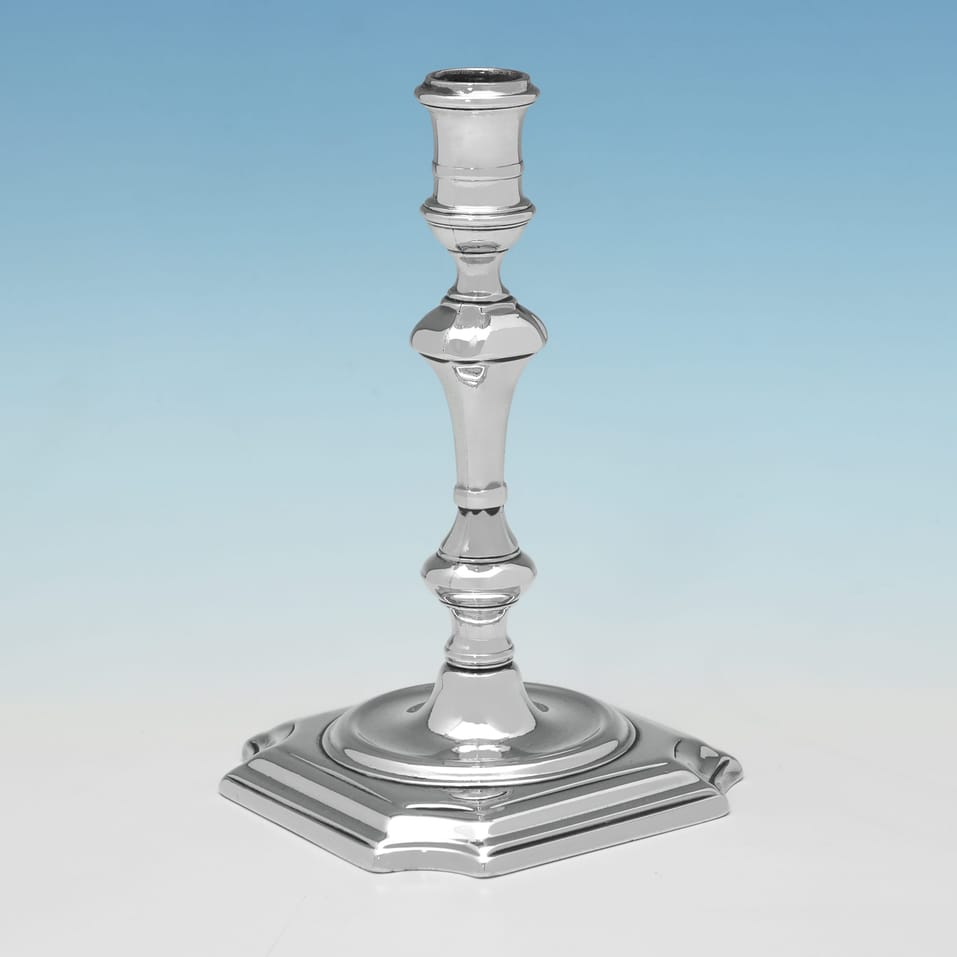Antique Silver Tapersticks
Designed to hold a wax taper, and used primarily for sealing wax, the silver taperstick was first produced during the latter part of the 17th Century, with the majority of examples produced from the middle of the 18th Century. Other uses for tapers included lighting pipes, and lighting other candles, and they were rarely used as a source of light. Early cast examples are highly sought after, as are later design lead pieces.
2 results
b6271 : Sterling Silver Taperstick
Hallmarked In 1729
Hallmarked in London in 1729 by Richard Green, this handsome, George II, Antique Sterling Silver Taperstick, is cast and of traditional form, with a cut corner base and reed detailing. The taperstick measures 4.25"(11cm) tall, by 2.75"(7cm) wide and deep, and weighs 3.6 troy ounces.
£2,495
b7300 : Sterling Silver Pair Of Tapersticks
Hallmarked In 1723
Hallmarked in London in 1723 by Francis Turner, this exquisite pair of George I, Antique Sterling Silver Tapersticks, are cast and of hexagonal form, featuring an engraved crest to each base. Each taperstick measures 4.5" (11.5cm) tall, by 3.25" (8cm) wide and deep, and together they weigh 7.9 troy ounces.
The crest is likely that of the Burke (or Bourke) family.
£8,995

